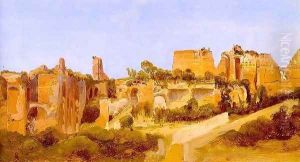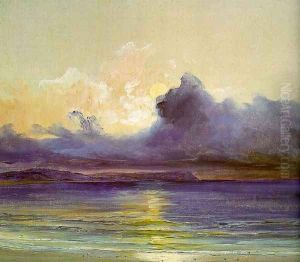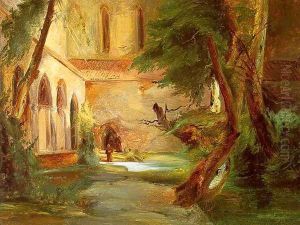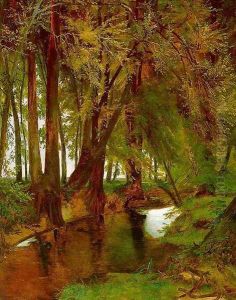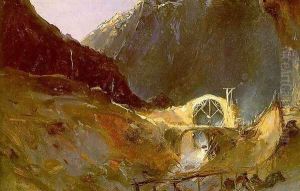Charles Blechen Paintings
Carl Eduard Ferdinand Blechen, known as Charles Blechen, was a German Romantic landscape painter born on July 29, 1798, in Cottbus, Brandenburg. His works are characterized by a dynamic treatment of natural light and shadow, a vivid use of color, and a romantic sensibility that was quite ahead of his time, often providing a unique bridge between the Romantic and Impressionist movements.
Blechen displayed artistic talent at an early age, but he initially pursued a career in banking following his father's footsteps. However, his passion for art prevailed, and he eventually began his formal art education in his late twenties. In 1822, he enrolled at the Academy of Arts in Berlin, where he studied under prominent painters of the time, including Wilhelm Schadow.
During the 1820s, Blechen's artistic style developed rapidly. He was greatly influenced by his travels to Italy from 1828 to 1829, where he was inspired by the Italian landscape and the work of the Old Masters. His Italian experiences had a profound impact on his use of light and atmosphere, elements that became distinguishing features of his work.
Upon his return to Germany, Blechen became a professor at the Berlin Academy in 1831. His innovative teaching methods and his emphasis on the importance of nature in art greatly influenced the next generation of German painters. Unfortunately, Blechen struggled with mental health issues throughout his life, which led to periods of hospitalization and impacted his ability to work.
Blechen's oeuvre includes a variety of subjects, from urban scenes and architectural studies to lush forest interiors and dramatic seascapes. His approach often involved painting en plein air, which allowed him to capture transient effects of light with a spontaneity that was unusual for his time. Some of his notable works include 'The Interior of the Palm House on the Pfaueninsel Near Potsdam' and 'The Woods Near Spandau.'
Despite his innovative techniques and the quality of his paintings, Blechen was not widely recognized during his lifetime. His work fell into obscurity after his death on July 23, 1840, in Berlin, but it was later rediscovered and reassessed in the 20th century. Today, Blechen is celebrated as a significant figure in the Romantic movement and as a precursor to the Impressionist style that would emerge later in the century. His paintings can be found in major art collections and museums across Germany and beyond.
